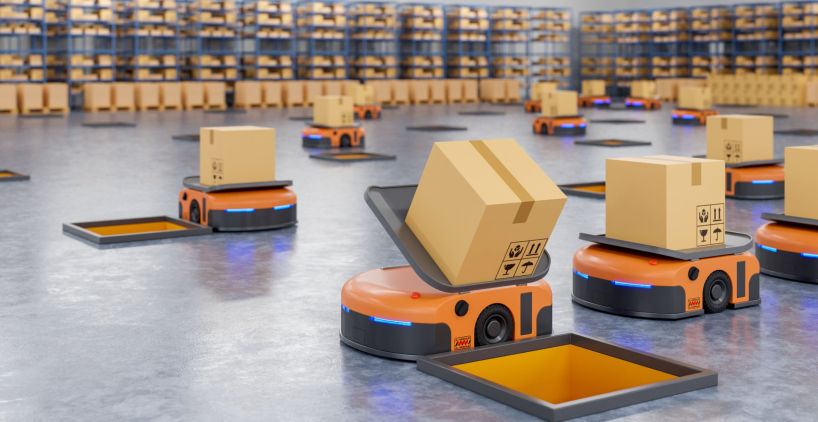Summary
In the world of digital shopping, anyone can select and shop whatever they need instead of going to a brick-and-mortar store. With just a smartphone, they can avoid traffic, stay clear of viruses, and in fact – get a better and broader shopping experience from the comfort of their homes. E-commerce was always here to stay. But modern retailers and customers never realized how much it mattered until now.
written For
Operations Specialist: Enhance Productivity improvement through automation and business process improvement.
Warehouse Automation Manager: To understand how Artificial intelligence is changing warehouses and how their job can be made easier.
Why is eCommerce Booming?
At present, with a post-COVID-19 era lurking in the corner, the world is cautiously preparing to break free of lockdown restrictions. However, the fact is that digital-first is no longer a buzzword. It’s a reality that 2020 brought to the table. As we advance, e-commerce will continue to grow. And it will put more onus on warehouses to become leaner in operations yet larger in storage capabilities and faster in delivery speeds.
The emergence of e-commerce has had a cyclical impact on the warehousing industry. It has caused a tremendous surge in customer demands, which has led to the growing need for more warehouse storage and more effective distribution centers.
Rise of automated dimensioning solutions
Automated dimensioning solutions make it effortless to calculate the DIM weight by determining the cubic package’s size and dividing it by the dimensional factor. It offers incomparable accuracy, convenience, and speed to the warehouses while ensuring customers’ accelerated shopping experience.
Types of automated dimensioners
These automated dimensioning capabilities are classified into large freight dimensioners and package dimensioners.
Large freight dimensioners, also known as pallet dimensioners, are leveraged to calculate crates and pallets’ measurements. When synced with external devices such as barcode scanners and weighing scales, they can provide valuable data-rich insights on the pallets. With this data, warehouses are frictionless to figure out the exact space requirements during the shipping phase.
The power of package dimensioners, also known as parcel dimensioners, lies in their ability to measure small-size packages of shapes like cubes, cuboids, polybags, or even irregular shapes. Package dimensioners can be synced with the conveyors to estimate the product’s dimensional data and capture its image. They can also instantly unearth information on defective products in less than a second.
How to select the right e-commerce warehouse
E-commerce companies rely on automated warehousing technology to enable quick order fulfillment and better-quality controls. It also helps them cut down warehousing costs involved in finding additional space to store more products. It is easy to reduce the dimensional weight (DIM) and boxes’ sizes with automated dimensioning solutions, eliminating complex space issues and unnecessary shipping charges.
There are many factors to consider while selecting the right e-commerce warehouse. Some of them are:
1. Choosing the right warehouse location
If warehouses are far away from the customer’s location, your shipping costs are bound to go sky-high, and the delivery time is likely to increase too.
Choosing a suitable warehouse location include five significant factors such as:
- Industry type: understand your vertical size, either it’s small or large-scale.
- Nearness to the carrier services: this aids in streamlining your shipping process and balances your clients’ convenience and proximity.
- Storage needs: you need to figure out what type of product it is like fragile, hazardous, and flammable; these relevant pieces of information help to ensure suitable accommodation for the product right from the warehouse to customers’ doorstep.
- Workforce availability: It would be best to have research on the geographic location of the warehouse. Due to the insufficient workforce availability for a high-demand area, they may acquire high-payed laborers, which impacts overall business costs.
- Durability: have an insight into the warehouses’ working pattern and the flow of orders to calibrate your warehouse size’s growth.
2. Understanding purchase patterns
Insights on purchase patterns can help avoid overstocking of products. Decisions vary based on the customer personas; this includes age, gender, location, forecast reports on the trending products, delivery timeframe, and shipping charges.
3. Ensuring full-time operations
The 24/7 e-commerce business requires warehouse owners to maintain delivery speed with a full-time service protocol. Here are five major activities to heighten your warehouse operations: receiving the product, putaway, packing, storage, and shipping. Managing all the above-mentioned warehouse activity can be a game-changer for successful full-time operations.
4. Adopting automation technologies
Robotics and AI-powered capabilities help warehouses automate and enhance repeatable processes like picking up and receiving packages.
For instance, we can deploy the automated dimensioning systems in the warehouse to eliminate the traditional dimensioning method. These automated dimensioner aids calibrate the dimensional data for parcels and the large pallets in less than a second, which is pretty agile and more helpful during the shipping process.
Additionally, these dimensioners are built with a barcode scanner as add-ons, which help navigate the products’ location for both the warehouse owners and consumers.
The sad truth is that many warehouses are still using traditional models. They are ill-equipped to manage the day-to-day stability of operations – let alone dealing with unexpected buying patterns or seasonal shopping spikes. Warehouses must be agile to support retailers from getting more products to the customers while taking a zero-compromise stance on the shipping journey’s efficiency and speed.
It’s why more warehouses and distribution centers have started to grow dependent on automated dimensioning systems.
Conclusion
In the coming days, the rise of eCommerce and warehouse automation would be a global buzzword. Centering the fact, most warehouses have started deploying automation to lessen the iterative task, boost the workforce pattern, turn customers to stick with the brand, and yield a decent profit.
How vMeasure help the warehouse industry?
VisAI Labs’ vMeasure automated dimensioning solution is built from scratch to measure the dimensional data such as length, breadth, height, and width of all shaped packages. These automated dimensioning solutions in two different ranges, such as vMeasure Parcel Pro S100 developed for small-sized parcels and S200 for freights and pallets. The vMeasure Parcel Pro automated dimensioning solution. This unique dimensioning solution can perform various tasks like dimensions the boxes instantly, interface with weighing scales and your ERP systems to digitize the dimensioning operations, detect broken packages and optimize packaging to enhance workforce safety and efficiency.
Feel free to reach us at sales@visailabs.com




